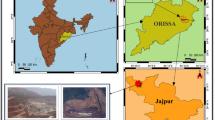Abstract
The vibration responses of pedestrian bridges are mainly caused by two transmission routes of ground and airflow under vehicle excitation. In order to clarify the action mechanism and influence degree of ground excitation and airflow excitation on pedestrian bridges, based on stochastic theory and flow field analysis method, the calculation models of vehicle-induced ground excitation and airflow excitation considering the influence of vehicle length, vehicle width and bridge deck width are established respectively. Considering the effects of vehicle speed, road grade, and vehicle mass, the vibration response of a continuous steel box girder pedestrian bridge under the two transmission routes was analyzed in this study. The laws of vibration acceleration and stress were summarized, and the accuracy of the finite element model and the laws were verified by field-measured data. Results show that road grade and vehicle mass are the main factors causing the vibrations of pedestrian bridges under vehicle excitation. Vehicle speed has a great influence on structural vibration under airflow excitation. The vibration response is the largest at mid-span along the pedestrian bridge-length direction. When the vehicle speed is less than about 60 km/h, the influence of the airflow excitation on the structure may not be considered. On this basis, the comfort level of the pedestrian bridge was evaluated using the British Standards Institution. The given evaluation criteria of the pedestrian bridge complement the design regulations of the pedestrian bridge.












Similar content being viewed by others
References
AQSIQ. and SAC. (2005). Mechanical vibration-Road surface profiles-Reporting of measured data (GB/T 7031–2005) (pp. 17–18). China Standard Press.
Dallard, P., Fitzpatrick, A. J., Flint, A., Low, A., Smith, R. R., Willford, M., et al. (2001). London millennium bridge: pedestrian-induced lateral vibration. Journal of Bridge Engineering, ASCE, 6(6), 412–417. https://doi.org/10.1061/(ASCE)1084-0702
Gu, X. L., Qian, H. J., Liu, H. S., & Wang, S. M. (2003). Foundation and foundation (3rd Edition) (pp. 397–402). China Industrial Construction Press.
Hong, H. P., Zu, G. G., & King, J. P. C. (2016). Estimating fatigue design load for overhead steel sign support structures under truck-induced wind pressure. Canadian Journal of Civil Engineering, NRC Research Press, 43(3), 279–286. https://doi.org/10.1139/cjce-2015-0158
Jiang, L., Liu, J., Li, S. J., & Chen, X. X. (2014). Analysis on vibration responses of footbridge induced by wind caused of main line train pass by. Journal of Wuhan University of Technology, 36(6), 79–83.
Lai, S. P., & He, W. J. (2018). Analysis of vibration comfort of long span pedestrian bridge. Building Structure, 48(18), 48–52.
Liu, S. Y., Zhang, X. F., Zhang, B., & Ding, Y. P. (2018). Detection and analysis of structural performance of steel bridge girder of a pedestrian bridge. Journal of Xihua University (natural Science Edition), 37(6), 67–72.
Ministry of Machinery Industry of the P. R. China. (1996). Power Machine Basic Design Specification (GB50040-96) (p. 70). China Planning Press.
MOC. (2006). Urban Road Traffic Planning and Design Specification (GB 50220-95). China Planning Press, Beijing, pp. 3.
Song, Y. F., & Chen, Y. F. (2007). Analysis method of vehicle vibration response based on road surface roughness. Journal of Traffic and Transportation Engineering, 7(4), 39–43.
Wang, L. B., Kang, X., & Jiang, P. W. (2016). Vibration analysis of a multi-span continuous bridge subject to complex traffic loading and vehicle dynamic interaction. KSCE Journal of Civil Engineering, KSCE, 20(1), 323–332. https://doi.org/10.1007/s12205-015-0358-4
Wang, W. A., Qin, S. M., Li, B., & Tan, S. K. (2018). Study on human-induced vibration comfort of long span steel box girder flyover. Southwest Highway, No., 3, 35–38.
Xia, H., & Zhang, N. (2005). Dynamic interaction between vehicles and structures (2nd edition) (pp. 119–124). Science Press.
Yang, N., Wang, M., & Zhang, S. (2016). “Vehicle-induced vibration response analysis and comfort evaluation of “building-bridge integration” structure. Journal of Hunan University (Natural Sciences), Hunan University, 43(7), 96–104.
Yang, W. (2005). Discussion on dynamic characteristics of steel structure pedestrian bridge. Journal of Highway and Transportation Research and Development, pp. 95–99.
Zhai, W. M. (2001). Vehicle-track coupling dynamics (p. 207). China Railway Press.
Zhang, G. H., & Ge, Y. J. (2009). Vibration characteristics test and analysis on concrete box girder continuous pedestrian bridge. Journal of Vibration and Shock, 28(2), 102–106.
Zhao, R., & Zhang, Y. G. (2015). Calculation method of vehicle-induced ground vibration attenuation. Journal of Vibration Measurement & Diagnosis, 35(2), 295–301.
Zhao, R., & Zhang, Y. G. (2016). Parametric analysis of simplified algorithm of vehicle-induced airflow excitation. Building Structure, 46(7), 93–98.
Zhou, G. L., Li, X. J., & Yu, T. (2010). Applicability research on base excitation models used in structural seismic response analysis. Journal of Building Structures, 31(Suppl 2), 82–88.
Zhu, Q. K., Li, H. N., Nan, N. N., & Du, Y. F. (2017). Vibration control of pedestrian-bridge vertical dynamic coupling interaction based on biodynamic model. Journal of Southeast University (english Edition), 33(2), 209–215. https://doi.org/10.3969/j.issn.1003-7985
Żoitowski, P., Piechna, J., Żoitowski, K., & Zobel, H. (2006). Analysis of dynamic loads on lightweight footbridge caused by lorry passing underneath. Bulletin of the Polish Academy of Sciences: Technical Sciences, Polish Academy of Sciences, 54(1), 33–44.
Acknowledgements
The authors acknowledge Doctor Start-up Foundation BS150256 provided by Xinjiang University.
Author information
Authors and Affiliations
Corresponding author
Additional information
Publisher's Note
Springer Nature remains neutral with regard to jurisdictional claims in published maps and institutional affiliations.
Rights and permissions
Springer Nature or its licensor (e.g. a society or other partner) holds exclusive rights to this article under a publishing agreement with the author(s) or other rightsholder(s); author self-archiving of the accepted manuscript version of this article is solely governed by the terms of such publishing agreement and applicable law.
About this article
Cite this article
Zhao, R., Wu, Y. & Dan, D. Research on Vehicle-Induced Vibration of Pedestrian Bridge and Its Application in Comfort Evaluation. Int J Steel Struct 24, 55–69 (2024). https://doi.org/10.1007/s13296-023-00798-0
Received:
Accepted:
Published:
Issue Date:
DOI: https://doi.org/10.1007/s13296-023-00798-0




